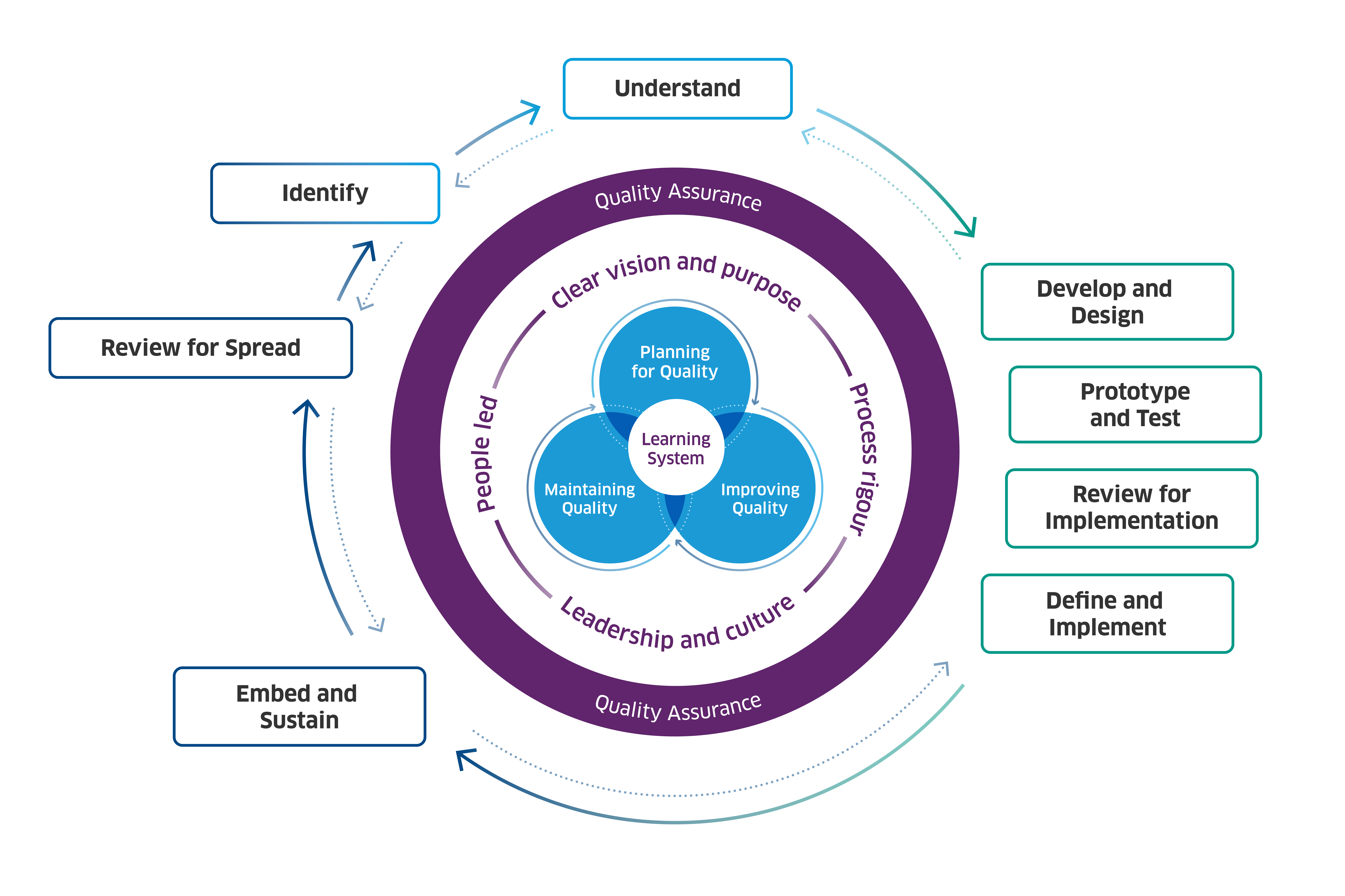Working with people with lived experience of psychosis, their families and carers alongside Scottish Government and NHS board pathfinder sites to prototype and test new mental health services for people experiencing a first episode of psychosis. The full case study and summary are available below.

Steps of change
Identify
Identified the problem: only 20% of people in Scotland had access to an EIP service. There are significantly improved outcomes for people where they have access to an EIP service.
Understand
Completed evidence review and national needs assessment to understand the system, the impact on people, and what needed to change.
Develop and design
Used service design approaches to ensure that the right changes were designed and that they were designed in the right way, including consideration of what works in rural/semi-rural settings.
Prototype and test
Prototyped and tested two EIP services in Tayside and Dumfries & Galloway using quality improvement methods to ensure process rigour.
Review for implementation
Reviewed the new EIP service for implementation, including consideration of qualitative feedback alongside quantitative data to understand the impact of the change.
Define and implement
Undertook an iterative process of prototyping, testing, and review for implementation over 18-24 months, including supporting pathfinder sites to find creative approaches to workforce challenges and ensuring appropriate training was in place.
Embed and sustain
Supported pathfinder sites to embed and sustain their EIP services. This included use of the implementation guide to enable local areas to maintain fidelity to the EIP model, and supporting business case development to mainstream funding and ensuring support for the EIP service in local strategic plans.
Review for spread
Tested an implementation guide for development of an EIP service, which will help to share and spread learning across other areas in Scotland.
Enablers of quality and change
Clear vision and purpose
A clear vision helped to provide direction, motivation, and alignment, including:
- a vision from Scottish Government that people with first episode psychosis will have timely access to effective care and treatment, with early intervention and a focus on recovery
- an evidence base showing that there is an opportunity to do things differently
- local recognition of the benefits of a new model of support for people with first episode psychosis and the need for a holistic, whole-person response
Leadership and culture
Leadership and culture were critical in driving the change forward, including:
- enabling workforce capacity to be transferred from mainstream services to the EIP service
- acknowledgement the importance of multidisciplinary team approach
- enabling a culture of improvement and a commitment to improving things for people
- recognising that working in partnership with third sector organisations is key
People-led
Ensuring the voice of lived and living experience was essential, including:
- commissioning a third sector organisation to facilitate national engagement with people with lived and living experience
- establishing a lived experience reference group to inform the programme
- supporting local areas to involve service users in the development of services and to use existing structures to ensure ongoing engagement
Process rigour
Ensuring process rigour was key to ensuring high-quality and reliable outcomes, including:
- using programme management to ensure clearly defined aims, objectives, and deliverables and achievable plans and timescales
- using quality improvement throughout the testing, including analysis of data to understand the impact of the change
- providing Clinical Lead coaching support to local clinical staff to ensure fidelity to the EIP model
- taking a structured and systematic approach to developing the new EIP service
